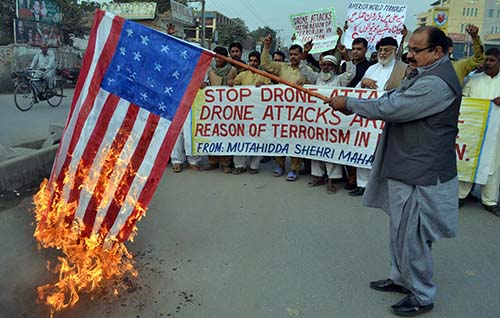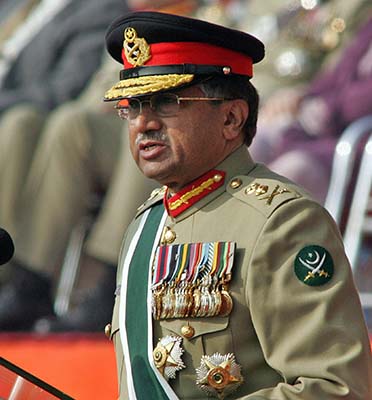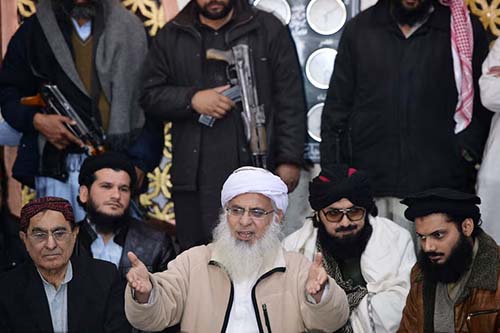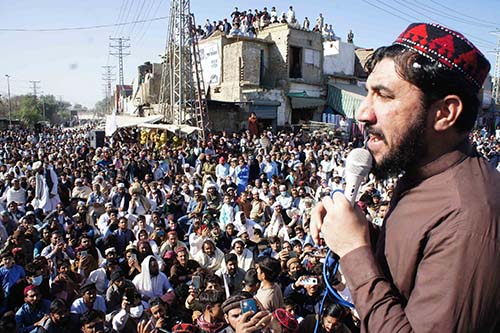The outlawed Tehreek-e-Taliban Pakistan (TTP) is the strongest and most dangerous armed group fighting the state and its institutions. As a result of the Operation Zarb-e-Azb in North Waziristan in June 2014 and Operation Khyber-II and -III in Khyber Agency, not only the TTP but also the central leadership of other terrorist groups and their main fighting forces active in the former FATA were forced to flee Pakistan. The TTP was particularly affected by these operations. On the one hand, it faced a military operation, and on the other, serious differences arose within its ranks. One of the key commanders, Umar Khalid Khorasani, along with 70 key commanders, left the TTP to form Jamat-ul-Ahrar. Another group of commanders led by Hafiz Saeed Khan Orakzai joined ISIS.
It would not be wrong to say that Operation Zarb-e-Azb broke the back of the TTP, but its head could not be crushed. The death of Mullah Fazlullah in a drone strike in Afghanistan in 2018 in a way benefited the group, as Mufti Noor Wali, after becoming its ameer, took several important steps to bring its disgruntled factions and individuals back into the movement. In August 2020, Jamaat Al-Ahrar and its proxy Hizb-ul-Ahrar, as well as many other small groups, rejoined the TTP. The key commanders of al-Qaeda in the subcontinent also joined the TTP. Since 2020, some 22 groups have joined the TTP. It appears that the TTP has undergone successful surgery on its broken back. Since its inception, this group has undergone many transformations. In this article, we will examine the ideological and evolutionary phases of the TTP, and also try to understand its connections with the Islamic Emirate of Afghanistan, i.e., the Afghan Taliban. Are they just two sides of the same coin?
How did the TTP come into being?
Pakistan had never deployed its army, paramilitary forces or police in the Federally Administered Tribal Areas (FATA). Some people claim that the tribes living in the former FATA had an agreement with Quaid-e-Azam that they would defend Pakistan’s western border, but on the condition that the government never deploys its armed forces there. Even during the Afghan jihad against the former Soviet Union, Pakistan did not deploy its armed forces in the tribal areas despite threats of direct attack. Pakistani law did not apply to the tribal areas, and the territory was governed under the FATA Crimes Regulation (FCR) — a system developed by the British that remained in force until 2018 when FATA was merged with Khyber-Pakhtunkhwa province.
When the United States invaded Afghanistan in 2001, the Afghan Taliban and the al-Qaeda leaders and fighters began taking refuge in the FATA. Many of them, who were hiding in mainland Pakistan, were arrested by the authorities and extradited to the United States. However, since there was no intervention from the Pakistan Army or police in FATA, these people found safe havens there. Due to the tribal culture and hatred for the United States, the local population began to protect al-Qaeda and the Taliban militants. It is part of the Pashtun culture that asylum seekers are given sanctuary and protection. Washington specifically sought al-Qaeda chief Osama bin Laden and other leaders. The United States believed that Osama bin Laden had migrated from Tora Bora to the tribal areas of Pakistan. The United States put intense pressure on Pakistan that if it did not take action against Al-Qaeda and the Taliban in the tribal areas, the American ‘Boots on Ground’ in the FATA would be the consequence. When Pakistan deployed its army in FATA under American pressure, there was resistance all over the area. This resistance was local in nature, not an armed resistance born out of an ideological movement, but reflecting tribal traditions. There was no central structure for those who resisted the deployment of the army. In 2004, Pakistan started deploying its military in FATA. Those who put up armed resistance became known as the Taliban. The local Taliban commanders also conducted operations against the US-led NATO forces in Afghanistan, while harbouring Al-Qaeda and the Afghan Taliban leadership. On one hand, the then President General Pervez Musharraf deployed the army in FATA and on the other hand, he gave secret permission to the US forces to conduct drone attacks in the tribal areas. The then Corps Commander Peshawar struck a peace deal with the local Taliban commander Naik Muhammad in Waziristan, but he was blown up in a drone strike, which caused distrust between the Pakistani armed forces and the tribal population.

Al-Qaeda’s impact on TTP
During this time, it became clear to the Al-Qaeda leadership that Pakistan, which may have a soft corner for the Afghan Taliban, viewed al-Qaeda as a threat to itself, as did the United States. Therefore, Al-Qaeda paid a lot of attention to the local Taliban. This led to the emergence of an ideological identity for the local Taliban, who took up arms only as a reaction to the government and not for the sake of ‘implementing’ Sharia law. It was actually al-Qaida that inculcated the ‘Takfeeri’ ideology in the TTP.
In July 2007, the Lal Masjid operation in Islamabad fueled the backlash against the military in the tribal areas. After about five months of the Lal Masjid operation, finally, in December 2007, all these small groups gathered on one platform under the leadership of Baitullah Mehsud. Al-Qaeda continued to provide ideological guidance to organize the TTP and provided training and financial support to its fighters for significant attacks. Careful analysis shows the deep impact of al-Qaeda ideologue Sheikh Yahya Al-Libi on the TTP’s literature.

Today, the TTP declares the implementation of Shariah in the country as its major goal, but that was never a primary reason for establishing the group. When the tension between Pakistan and India reached its peak due to the Mumbai attacks, the TTP founder Ameer Baitullah Mehsud announced that he would fight to defend Pakistan. That is, until that time, the TTP did not stand against the state of Pakistan, but its purpose was to fight against the Pakistan Army as a reaction to deployment in FATA. Just as there is a difference in the ideologies of al-Qaeda and the Afghan Taliban despite being allies, there is also a difference in the ideologies of the TTP and the Afghan Taliban. This is the fundamental difference which many analysts of Pakistan are either not ready to admit or are not ready to understand that just as al-Qaeda and the Afghan Taliban are two separate organisations and movements despite being allies, so are the TTP and the Afghan Taliban.
500 Ulema’s Fatwa in support of TTP: A myth or reality?
The TTP leadership and their propagandists often claim that they are waging jihad in Pakistan in the light of the fatwas of 500 clerics. This Fatwa was issued in 2004 and was signed by about 500 Ulema, including a prominent religious scholar of that time, Mufti Nizamuddin Shamzai. However, the fatwa did not justify “jihad” against Pakistan. The Fatwa had declared that the then ‘Wana Operation’ was against the teachings of Islam, and nothing more. Even if it is accepted that the said ‘fatwa’ allowed war against Pakistan on the basis of the Wana operation, it proves that this is a reactionary movement, and not for the implementation of Sharia.
TTP’s Sharia Demand
Sharia enforcement demand by the TTP came under Mullah Fazlullah’s leadership. Fazlullah was appointed as the TTP ameer in November 2013 after the death of Hakeemullah Mehsud in a US drone attack. This was the first and, so far, the last time when the leadership of this group went beyond the Mehsud tribe and FATA. Mullah Fazlullah hailed from Swat and was the son-in-law of Sufi Muhammad, the head of Tehreek Nifaz-e-Sharia Muhammadi. In the days of Wali-e-Swat rule, people used to get cheap and quick justice, but when the laws of Pakistan came into force, getting speedy justice became a nightmare. Instead of following the peaceful pattern of the TNSM of Sufi Muhammad, Mullah Fazlullah took up arms and announced Sharia implementation in parts of the Malakand Division. He was operating independently from the TTP, but later on, when Baitullah Mehsud sent some help to fight against military operations, he joined the TTP and brought along the slogan of ‘Sharia Enforcement’.

When the TTP leadership came from the Mehsud tribe of Waziristan to Mullah Fazlullah, it gradually weakened. Fazlullah was more educated than other commanders in terms of religious knowledge and was also an expert in the art of speech. But he neither had the experience of fighting nor organisational skills. After Hakimullah Mehsud’s death, Khan Saeed Sajna and Umar Khalid Khorasani were the two leading contenders for the TTP leadership. For the time being, both accepted Fazlullah as ameer but in 2014, both went their separate ways with their respective factions. Umar Khalid Khorasani formed the Jamaat-ul-Ahrar, while Khan Saeed Sajna went into hiding in Afghanistan for a long time after clashing with the Shahryar Mehsud group. The third leadership contender was Hafiz Saeed Khan Orakzai, who joined ISIS in 2014. During Mullah Fazlullah’s tenure, a group of non-Pashtun fighters under the leadership of Ismatullah Muawiya broke away from the TTP. This group, known as the Punjabi Taliban, denounced operations against Pakistan and ceased all its militant activities and its focus shifted to fighting foreign forces in Afghanistan.
In 2014, when the TTP and other militant groups were being wiped out from FATA, ISIS was entering the region. It was also the first year of Mullah Fazlullah’s leadership when another large group led by Hafiz Saeed Khan pulled out of the TTP in October 2014. Among those who left the TTP with Hafiz Saeed Khan were TTP spokesperson Sheikh Maqbool (Shahidullah Shahid), Khyber Agency Chief Gulzaman Fateh, Peshawar Chief Mufti Hasan Swati, Kurram Agency Chief Hafiz Doulat and many others. This group first named itself Tehreek-e-Khilafat Pakistan, then pledged allegiance to the ISIS leader Abu Bakr al-Baghdadi in absentia. As mentioned earlier, the TTP is more influenced by the ideology of al-Qaeda than the Afghan Taliban. Al-Qaeda gave birth to Daesh, and the main reason Daesh got its initial leadership and fighters from the TTP in the region was the influence of al-Qaeda’s ideology in the group.
The Taliban and al-Qaeda are operational allies, but the former did not give much acceptance to pan-Islamic ideas of its mentor. Perhaps, this was why very few people defected from the Afghan Taliban and joined Daesh. However, two notable names joined Daesh. One was Abdul Rahim Muslim Dost, a former prisoner of Guantanamo, and the other was lesser-known Maulvi Abdul Rauf Khadim from southern Afghanistan. While the ideology of al-Qaeda influenced the TTP, a large number of its members joined ISIS.
Interestingly, the TTP and Daesh also have a soft corner for each other as they both never officially speak against each other. Frequent defections from the TTP to DAESH and DAESH to the TTP is a regular occurrence. A clear example of this was the presence of Hafiz Daulat and Mufti Hasan, along with Umar Khalid Khorasani, when he was targeted in an IED in Pakitka in August 2022. Both had left the TTP in 2014 and joined DAESH. It is not known when these two Daesh commanders rejoined the TTP, their relationship with the TTP, and what command they possessed.
Hence, a militant group formed in reaction to Pakistan’s military deployment in FATA, passed through many phases and eventually became a fertile recruiting ground for DAESH/IS.
Transformation under Mufti Noor Wali
After the death of Mullah Fazlullah in 2018, there was another shift in the ideology of TTP. Mufti Noor Wali Mehsud apparently abandoned the ideology of enforcement of Sharia in the whole country and adjusted its focus back on the tribal areas. In an open letter a few years back, he wrote that the tribal areas were an independent territory (Azad Watan), and had joined Pakistan because it was promised that Islamic Sharia would be implemented there, but despite the passage of 70 years, this promise remains unfulfilled. So, now there is no point to keep the ‘Azad Watan’ with Pakistan, the letter added. The TTP seems more interested in enjoying power in pockets of the tribal areas, and the slogan of Sharia is just to attract and motivate its young fighters and sympathisers. Even during the negotiations with the Pakistani government last year, the implementation of Sharia law was not included in the demands of the TTP. Its primary demand was to reverse the merger of FATA.

The TTP’s new narrative of ‘Pashtun Watan’ or independent tribal homeland is quite similar to the Pashtun Tahafuz Movement (PTM). In the past, the TTP used to present and pitch itself as a guardian of ‘Islamic causes’ and often talked about global Muslim issues. However, Under Mufti Noor Wali’s ‘pragmatic’ leadership, the group aligned itself with the demands of the PTM and played smartly to attract the disgruntled youth. Historically, the Jihadi and the sub-nationalist groups competed against one another. However, the TTP now often issues statements supporting the Baloch separatists as well as the PTM.
The change that the current leadership of the TTP has brought in its ideology also seems to be part of a trick. The TTP has been declared a terrorist group by the United Nations and the United States. Mufti Noor Wali has been trying to get the international sanctions lifted. The media wing of the TTP, Umar Media, frequently makes such statements that try to give an impression that this group has no objectives outside Pakistan. The TTP perhaps ignores deliberately that a car bomber, who attempted to detonate a car bomb in New York’s Time Square in 2010, was a member of TTP. It perhaps also forgets that the triple agent Jordanian doctor, who carried out the most lethal attack in the history of the CIA by detonating himself in Camp Champman in Khost, Afghanistan had also pledged allegiance with Hakeemullah Mehsud before going for the attack.
When the TTP attacked the Army Public School in Peshawar in 2014 and killed more than 145 people, most of them students, it faced intense public resistance and hatred in the Pashtun areas. Mullah Fazlullah had justified the attack in a video statement by saying that future army leadership was being trained at the APS. When the TTP was dying due to lack of public support in tribal areas, the PTM provided it with a lifeline by introducing the infamous slogan ‘Yeh Jo Dehasatgardi Hay, iss K Peechay Wardi Hay’. The TTP started to distance itself from the APS attack and then made false claims through a former SSG soldier Mudassar Iqbal that the APS attack was also the handiwork of the military itself. No one believed the TTP’s claims as Mullah Fazlullah himself had not only accepted the responsibility of the attack, but even tried to justify it through lame excuses. However, the minds polluted by the PTM’s narrative helped the TTP to repose itself. Due to the anti-Army sentiment in the Pashtun region spread by the PTM, the TTP found new recruiting grounds. Aligning itself with sub-nationalist narratives provided the TTP with fresh recruits from FATA, and two militant groups joined it in 2022 from Balochistan’s non-Pashtun areas.
New Narrative: A deception or reality?
While the TTP has been trying to present itself as an entity which is sensitive to sub-nationalist causes and with no global agenda, the impact and influence of al-Qaeda are still distinctly evident. In the first week of 2023, when the TTP announced new postings and transfers and restructuring of some of its departments, it appointed a former key al-Qaeda operative Chaudhry Muneeb Ahmad Jatt, as head of Umar Media. He had worked as a deputy of Ustad Ahmad Farooq of Al-Qaeda.
In a video statement, Mufti Noor Wali had recently sought ‘guidance’ from religious scholars of Pakistan. Responding to him, Pakistan’s top religious scholar Mufti Taqi Uslmani issued a video statement and said that fighting against the Pakistani state is Haram (forbidden). This message was communicated to Mufti Noor Wali face-to-face when Mufti Taqi Usmani met him last year. At that time, Mufti Noor Wali agreed to denounce fighting against the Pakistani state and now it is strange that he is again seeking guidance.
The Paigham-e-Pakistan initiative, launched in 2018, now has the endorsement of more than 6,000 renowned Ulema of Pakistan. This ideological counter-narrative has put the TTP on the back foot (at least ideologically). The blunt statement of Mufti Taqi Usmani in favour of Paigham-e-Pakistan will further augment the counter-narrative of the state against TTP, which could not find any support from any of the renowned religious scholars of the country.
Mufti Noor Wali’s pragmatic approach can provide a better chance of successful negotiations if the Pakistani government decides to revive talks with the TTP. He has indicated to denounce violence. A consistent engagement on the ideological and academic front can be helpful. The reasons for which TTP was founded no longer exist. It is time for the group’s leadership to save the youth from indulging in violence. The group is standing on fragile ideological grounds. The counter-narrative initiatives like Paigham-e-Pakistan need a more robust and impactful push to save our youth from falling into the hands of disillusioned ideologies.



